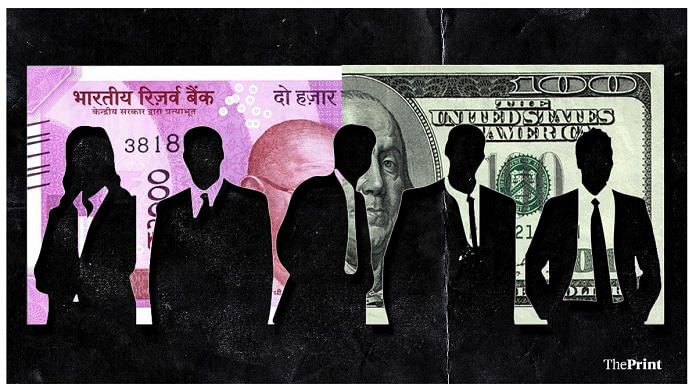Made public last month, the paper came to its conclusions by studying the wealth and reported incomes of over 7,600 families and their family members across India, with the raw data taken from the national account of listed companies of the wealthiest Indian families, income tax statistics from the Central Board of Direct Taxes, the Lok Sabha election affidavits (2014 and 2019), and the Forbes list (FL) of billionaires, among others.
Income-wealth inverse relationship
The wealthiest 0.1 percent of families report a total income of roughly two percent of their wealth, and the wealthiest Indian families on the Forbes list (FL) report a total taxable income of less than 0.6 percent of their wealth, states the study.
In contrast, the study adds that the bottom 10 percent of families report 188 percent of their wealth as total income.
According to the study, the under-reporting of income increases with wealth, and even after adding all types of income, the reported income of the wealthiest 0.1 percent of families is still less than 20% of their capital income or annual return from wealth. In other words, 80 percent of the capital income of the top 0.1 percent goes unreported.
Similarly, the paper states that 90% of the capital income of the Forbes-list, ultra-wealthy families goes unreported.
Besides under-reporting their rental income and disguising their taxable income as tax-free agricultural income, the wealthy also avoid taxes by “exploiting gaps in tax rules”, professor Ram Singh told ThePrint.
He said: “All wealth groups evade tax on rental and case-based business income and misreport taxable income as tax-free agricultural income. However, the wealthy and super-wealthy engage in tax avoidance, i.e., exploit gaps in tax rules. Further, they minimise their income-wealth ratio by suppressing dividend payouts and take-outs of wages, honoraria and commissions.”
The Indian tax regime is said to be “progressive” since the applicable marginal tax rates increase with reported income. However, with the affluent choosing how much of their income gets taxed, the paper posits the Indian tax regime as regressive vis-à-vis wealth.
“Even with the most generous estimates, the tax liability of the top centile [individuals] amounts to 1% of their wealth. For the top one-tenth of the top centile, the total tax liability amounts to less than 0.8% of their wealth. The super-wealthy Indians on the FL [Forbes List] pay tax that is less than 0.2% of their wealth,” the paper states.
Also Read: ‘How India’s share in global goods exports has remained lower than what it was at Independence
More income reported now than earlier
“Measures taken by the Indian central government against illicit income and wealth hoarding have delivered the intended results,” the paper says.
Expounding on this, professor Ram Singh said the 2016 demonetisation, an increase in income tax seizures, and searches by the Enforcement Directorate to improve the reporting of incomes, among other initiatives, have improved the situation.
He said, “The reporting of income and wealth has improved in recent years. Compared to 2014, people reported significantly more income and wealth in 2019, even after considering inflation, rising national income, and other relevant factors. My research shows that this improvement in tax compliance is attributable to the measures taken by the Centre against illicit income and wealth hoarding during 2014-19.
The paper also outlines gender biases. Women report a lower income than men, with the paper attributing this trend to labour market outcomes where wages for women are lower than for men and that women, unlike men, hold non-income-yielding assets, such as gold and jewellery.
Politicians might be ‘more truthful‘
Although politicians are usually wealthier than the average person across countries, the gap is starker for India.
The paper outlines that the average family wealth of Lok Sabha MPs in 2019 was USD 9,98,311, and the National Sample Survey Office (NSSO) 77th round showed the average wealth of an Indian household as USD 26,867. So, in India, the gap between the average family wealth of politicians and the average wealth of the population is 1 to 37.
This ratio is 1 to 4 in the US.
The paper says an average Indian politician is much wealthier than the rest of the population, but even the most affluent are behind their Chinese and American counterparts.
Comparing the wealth of the top 10 most affluent elected politicians, the study says that the wealthiest members of China’s National People’s Congress had a combined wealth of USD 132.3 billion in 2018, and those of the US House of Representatives had USD 1.2 billion that year. However, the wealthiest Indian MPs of 2019 had just USD 0.3 billion.
The professor also highlights that Indian politicians are more honest in reporting their income than in the US and China.
“An average Indian politician is much poorer than their American and Chinese counterparts. This is because reporting requirements for the finances [of politicians] are most stringent in India. Moreover, income and wealth disclosures by Indian politicians are public and subject to scrutiny by the media, civil society, opponents, and the Election Commission of India,” Ram Singh says. “Indian politicians might be reporting [their wealth] more truthfully than the average taxpayers.”
Udit Bubna is an intern with ThePrint
(Edited by Madhurita Goswami)
Also Read: ‘SC can’t be instrument of fraud.’ CBI told to probe case implicating Nitish Katara murder witness
var myListener = function() { document.removeEventListener('mousemove', myListener, false); lazyloadmyframes(); };
document.addEventListener('mousemove', myListener, false);
window.addEventListener('scroll', function() { if (ytflag == 0) { lazyloadmyframes(); ytflag = 1; } });
function lazyloadmyframes() { var ytv = document.getElementsByClassName("klazyiframe"); for (var i = 0; i < ytv.length; i++) { ytv[i].src = ytv[i].getAttribute('data-src'); } }








